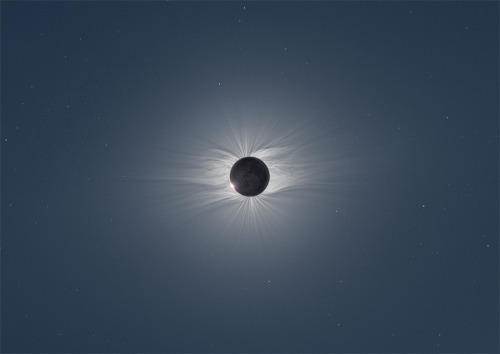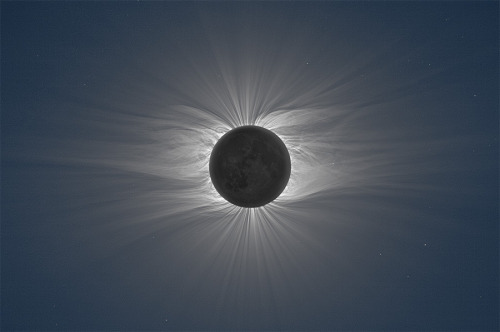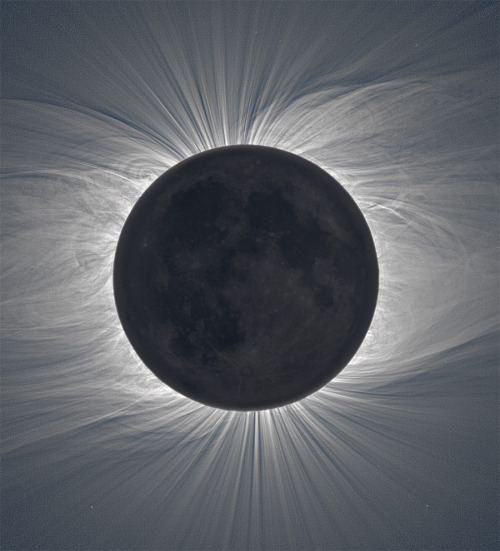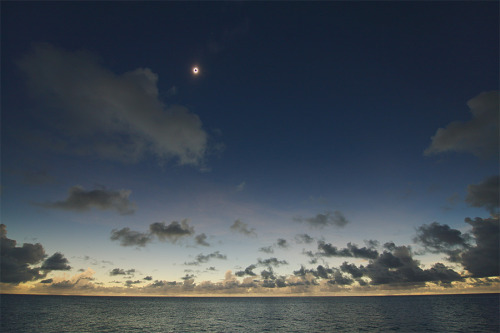LOL Oh @claraxbarton You Know Me SO Well!
LOL oh @claraxbarton you know me SO well!
I’ve totally got the first ep on my DVR - I just haven’t had time to watch it lol
@maevemauvaise !!!!!!!!!!!!
More Posts from Maevetheeuropan and Others
People can’t anticipate how much they’ll miss the natural world until they are deprived of it. I have read about submarine crewmen who haunt the sonar room, listening to whale songs and colonies of snapping shrimp. Submarine captains dispense “periscope liberty” - a chance to gaze at clouds and birds and coastlines - and remind themselves that the natural world still exists. I once met a man who told me that after landing in Christchurch, New Zealand, after a winter at the South Pole research station, he and his companions spent a couple of days just wandering around staring in awe at flowers and trees. At one point, one of them spotted a woman pushing a stroller. “A baby!” he shouted, and they all rushed across the street to see. The woman turned the stroller and ran. Nothing tops space as a barren, unnatural environment. Astronauts who had no prior interest in gardening spend hours tending experimental greenhouses. “They are our love,” said cosmonaut Vladislav Volkov of the tiny flax plants - with which they shared the confines of Salyut 1, the first Soviet space station. At least in orbit, you can look out the window and see the natural world below. On a Mars mission, once astronauts lose sight of Earth, they’ll be nothing to see outside the window. “You’ll be bathed in permanent sunlight, so you won’t even see any stars,” astronaut Andy Thomas explained to me. “All you’ll see is black.”
Mary Roach. Packing for Mars: The Curious Science of Life in the Void.
This is a really interesting read - it’s got a lot of information that I would never have thought to think of (such as - will astronauts eyeballs become different shapes without gravity - weird), but it also has really good chapters about the psychology of space.
(via psycholar)
this is wonderful - and def something I've thought about!

Glittering Frisbee Galaxy: This image from Hubble’s shows a section of a spiral galaxy located about 50 million light-years from Earth. We tend to think of spiral galaxies as massive and roughly circular celestial bodies, so this glittering oval does not immediately appear to fit the visual bill. What’s going on? Imagine a spiral galaxy as a circular frisbee spinning gently in space. When we see it face on, our observations reveal a spectacular amount of detail and structure. However, the galaxy frisbee is very nearly edge-on with respect to Earth, giving it an appearance that is more oval than circular. The spiral arms, which curve out from the galaxy’s dense core, can just about be seen. Although spiral galaxies might appear static with their picturesque shapes frozen in space, this is very far from the truth. The stars in these dramatic spiral configurations are constantly moving as they orbit around the galaxy’s core, with those on the inside making the orbit faster than those sitting further out. This makes the formation and continued existence of a spiral galaxy’s arms something of a cosmic puzzle, because the arms wrapped around the spinning core should become wound tighter and tighter as time goes on - but this is not what we see. This is known as the winding problem. Image credit: ESA/Hubble & NASA For more information on this image, visit: https://go.nasa.gov/2niODGL
Solar System: Things to Know This Week
Reaching out into space yields benefits on Earth. Many of these have practical applications — but there’s something more than that. Call it inspiration, perhaps, what photographer Ansel Adams referred to as nature’s “endless prospect of magic and wonder."
Our ongoing exploration of the solar system has yielded more than a few magical images. Why not keep some of them close by to inspire your own explorations? This week, we offer 10 planetary photos suitable for wallpapers on your desktop or phone. Find many more in our galleries. These images were the result of audacious expeditions into deep space; as author Edward Abbey said, "May your trails be crooked, winding, lonesome, dangerous, leading to the most amazing view.”

1. Martian Selfie
This self-portrait of NASA’s Curiosity Mars rover shows the robotic geologist in the “Murray Buttes” area on lower Mount Sharp. Key features on the skyline of this panorama are the dark mesa called “M12” to the left of the rover’s mast and pale, upper Mount Sharp to the right of the mast. The top of M12 stands about 23 feet (7 meters) above the base of the sloping piles of rocks just behind Curiosity. The scene combines approximately 60 images taken by the Mars Hand Lens Imager, or MAHLI, camera at the end of the rover’s robotic arm. Most of the component images were taken on September 17, 2016.
800 x 600
1024 x 768
1280 x 1024
1600 x 1200
1280 x 800
1440 x 900
1920 x 1200

2. The Colors of Pluto
NASA’s New Horizons spacecraft captured this high-resolution, enhanced color view of Pluto on July 14, 2015. The image combines blue, red and infrared images taken by the Ralph/Multispectral Visual Imaging Camera (MVIC). Pluto’s surface sports a remarkable range of subtle colors, enhanced in this view to a rainbow of pale blues, yellows, oranges, and deep reds. Many landforms have their own distinct colors, telling a complex geological and climatological story that scientists have only just begun to decode.
800 x 600
1024 x 768
1280 x 1024
1600 x 1200
1280 x 800
1440 x 900
1920 x 1200

3. The Day the Earth Smiled
On July 19, 2013, in an event celebrated the world over, our Cassini spacecraft slipped into Saturn’s shadow and turned to image the planet, seven of its moons, its inner rings — and, in the background, our home planet, Earth. This mosaic is special as it marks the third time our home planet was imaged from the outer solar system; the second time it was imaged by Cassini from Saturn’s orbit, the first time ever that inhabitants of Earth were made aware in advance that their photo would be taken from such a great distance.
800 x 600
1024 x 768
1280 x 1024
1600 x 1200
1280 x 800
1440 x 900
1920 x 1200

4. Looking Back
Before leaving the Pluto system forever, New Horizons turned back to see Pluto backlit by the sun. The small world’s haze layer shows its blue color in this picture. The high-altitude haze is thought to be similar in nature to that seen at Saturn’s moon Titan. The source of both hazes likely involves sunlight-initiated chemical reactions of nitrogen and methane, leading to relatively small, soot-like particles called tholins. This image was generated by combining information from blue, red and near-infrared images to closely replicate the color a human eye would perceive.
800 x 600
1024 x 768
1280 x 1024
1600 x 1200
1280 x 800
1440 x 900
1920 x 1200

5. Catching Its Own Tail
A huge storm churning through the atmosphere in Saturn’s northern hemisphere overtakes itself as it encircles the planet in this true-color view from Cassini. This picture, captured on February 25, 2011, was taken about 12 weeks after the storm began, and the clouds by this time had formed a tail that wrapped around the planet. The storm is a prodigious source of radio noise, which comes from lightning deep within the planet’s atmosphere.
800 x 600
1024 x 768
1280 x 1024
1600 x 1200
1280 x 800
1440 x 900
1920 x 1200

6. The Great Red Spot
Another massive storm, this time on Jupiter, as seen in this dramatic close-up by Voyager 1 in 1979. The Great Red Spot is much larger than the entire Earth.
800 x 600
1024 x 768
1280 x 1024
1600 x 1200
1280 x 800
1440 x 900
1920 x 1200

7. More Stormy Weather
Jupiter is still just as stormy today, as seen in this recent view from NASA’s Juno spacecraft, when it soared directly over Jupiter’s south pole on February 2, 2017, from an altitude of about 62,800 miles (101,000 kilometers) above the cloud tops. From this unique vantage point we see the terminator (where day meets night) cutting across the Jovian south polar region’s restless, marbled atmosphere with the south pole itself approximately in the center of that border. This image was processed by citizen scientist John Landino. This enhanced color version highlights the bright high clouds and numerous meandering oval storms.
800 x 600
1024 x 768
1280 x 1024
1600 x 1200
1280 x 800
1440 x 900
1920 x 1200

8. X-Ray Vision
X-rays stream off the sun in this image showing observations from by our Nuclear Spectroscopic Telescope Array, or NuSTAR, overlaid on a picture taken by our Solar Dynamics Observatory (SDO). The NuSTAR data, seen in green and blue, reveal solar high-energy emission. The high-energy X-rays come from gas heated to above 3 million degrees. The red channel represents ultraviolet light captured by SDO, and shows the presence of lower-temperature material in the solar atmosphere at 1 million degrees.
800 x 600
1024 x 768
1280 x 1024
1600 x 1200
1280 x 800
1440 x 900
1920 x 1200

9. One Space Robot Photographs Another
This image from NASA’s Mars Reconnaissance Orbiter shows Victoria crater, near the equator of Mars. The crater is approximately half a mile (800 meters) in diameter. It has a distinctive scalloped shape to its rim, caused by erosion and downhill movement of crater wall material. Since January 2004, the Mars Exploration Rover Opportunity has been operating in the region where Victoria crater is found. Five days before this image was taken in October 2006, Opportunity arrived at the rim of the crater after a drive of more than over 5 miles (9 kilometers). The rover can be seen in this image, as a dot at roughly the “ten o'clock” position along the rim of the crater. (You can zoom in on the full-resolution version here.)
800 x 600
1024 x 768
1280 x 1024
1600 x 1200
1280 x 800
1440 x 900
1920 x 1200

10. Night Lights
Last, but far from least, is this remarkable new view of our home planet. Last week, we released new global maps of Earth at night, providing the clearest yet composite view of the patterns of human settlement across our planet. This composite image, one of three new full-hemisphere views, provides a view of the Americas at night from the NASA-NOAA Suomi-NPP satellite. The clouds and sun glint — added here for aesthetic effect — are derived from MODIS instrument land surface and cloud cover products.
Full Earth at night map
Americas at night
Discover more lists of 10 things to know about our solar system HERE.
Make sure to follow us on Tumblr for your regular dose of space: http://nasa.tumblr.com

What’s hard about Mars?
Mars, unlike the Moon, is far away. It also has an atmosphere - but not a useful one. Atmospheric density, wind, dust storms… all of these things contribute to a larger list of circumstances that any given mission needs to be ready for.
All those circumstances contribute heavily to the cost, time and hard resources needed to be poured into the mission preparation. In addition, the vast distance to Mars means the cost of carrying all this prepared hardware must be covered.
The atmosphere of Mars is such that if you’re going too fast during entry, you’ll burn up. It’s such a low density however that parachutes aren’t tremendously useful.
During the Curiosity rover’s landing it needed a heat shield, a supersonic parachute, rocket boosters to slow it down, a sky-crane to allow Curiosity to drop to the surface like an interplanetary spider and then explosive propulsion to send the platform it dropped from a safe distance away to crash into the surface.
During this landing, the rover experienced a force of about 15 g’s. That force would make a 200 lb man weigh 3000 lbs. Without proper precautions it would make the average head snap down at about 150 to 165 lbs.
NASA’s developing a new type of parachute and it’s being attached to a flying saucer-like spacecraft known as the Low-Density Supersonic Decelerator. This is currently hoped to provide NASA with a stable go-to architecture for future Mars missions.
The red planet’s killed most missions sent there. Power for solar-panels on rovers get covered during planet-wide dust storms. Some missions smashed into its moons. Some have smashed into its surface. Others have simply missions the planet entirely only to drift away as Mars dances around the Sun.
The world is an untamed place and has sought to buck all attempts to temper its mysteries.
(Image credit: ESA / DLR / FU Berlin (G. Neukum) / animation by Emily Lakdawalla)
Five human spaceflight missions to look forward to in the next decade
by Chris Arridge

From astronauts breaking records for the longest amount of time spent in space to experiments growing food and keeping bacteria in orbit, the past decade of human spaceflight has been fascinating. There has also been an explosion of privately-funded spaceflight companies providing access to space, including delivering supplies to the International Space Station (ISS).
The next decade will see a remarkable mix of countries and companies getting involved. Plans include taking humans from low-Earth orbit back to the moon and even an asteroid in the 2020s – all designed to help prepare for the ultimate goal of a human mission to Mars in the 2030s.
Keep reading



ExoMars Orbiter’s First Images
(Image credit: ESA/Roscosmos/ExoMars/CaSSIS/UniBE)

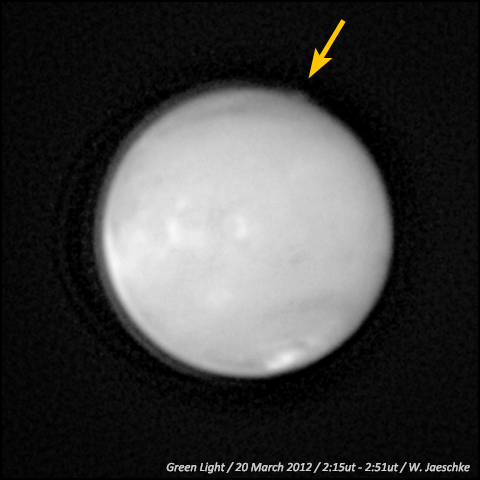
ARE MYSTERY MARS PLUMES CAUSED BY SPACE WEATHER?
Mysterious high-rise clouds seen appearing suddenly in the martian atmosphere on a handful of occasions may be linked to space weather, say Mars Express scientists.
Amateur astronomers using telescopes on Earth were the first to report an unusual cloud-like plume in 2012 that topped-out high above the surface of Mars at an altitude around 250 km.
The feature developed in less than 10 hours, covered an area of up to 1000 x 500 km, and remained visible for around 10 days.
The extreme altitude poses something of a problem in explaining the features: it is far higher than where typical clouds of frozen carbon dioxide and water are thought to be able to form in the atmosphere.
Indeed, the high altitude corresponds to the ionosphere, where the atmosphere directly interacts with the incoming solar wind of electrically charged atomic particles.
Speculation as to their cause has included exceptional atmospheric circumstances, auroral emissions, associations with local crustal anomalies, or a meteor impact, but so far it has not been possible to identify the root cause.
Unfortunately, the spacecraft orbiting Mars were not in the right position to see the 2012 plume visually, but scientists have now looked into plasma and solar wind measurements collected by Mars Express at the time.
They have found evidence for a large ‘coronal mass ejection’, or CME, from the Sun striking the martian atmosphere in the right place and at around the right time.
“Our plasma observations tell us that there was a space weather event large enough to impact Mars and increase the escape of plasma from the planet’s atmosphere,” says David Andrews of the Swedish Institute of Space Physics, and lead author of the paper reporting the Mars Express results.
“But we were not able to see any signatures in the ionosphere that we can categorically say were due to the presence of this plume.
“One problem is that the plume was seen at the day–night boundary, over a region of known strong crustal magnetic fields where we know the ionosphere is generally very disturbed, so searching for ‘extra’ signatures is rather challenging.”
To go further, the scientists have looked at the chances of these two relatively rare events – a large and fast CME colliding with Mars, and the mysterious plume – occurring at the same time.
They have been searching back through the archives for similar events, but they are rare.
For example, the Hubble Space Telescope observed a similar high plume in May 1997, and a CME was registered hitting Earth at the same time.
Although that CME was widely studied, there is no information from Mars orbiters to judge the scale of its impact at the Red Planet.
-
 maevetheeuropan reblogged this · 8 years ago
maevetheeuropan reblogged this · 8 years ago -
 maevemauvaise liked this · 8 years ago
maevemauvaise liked this · 8 years ago -
 empathicdreaming-blog liked this · 8 years ago
empathicdreaming-blog liked this · 8 years ago -
 lord-faygo liked this · 8 years ago
lord-faygo liked this · 8 years ago -
 claraxbarton reblogged this · 8 years ago
claraxbarton reblogged this · 8 years ago


